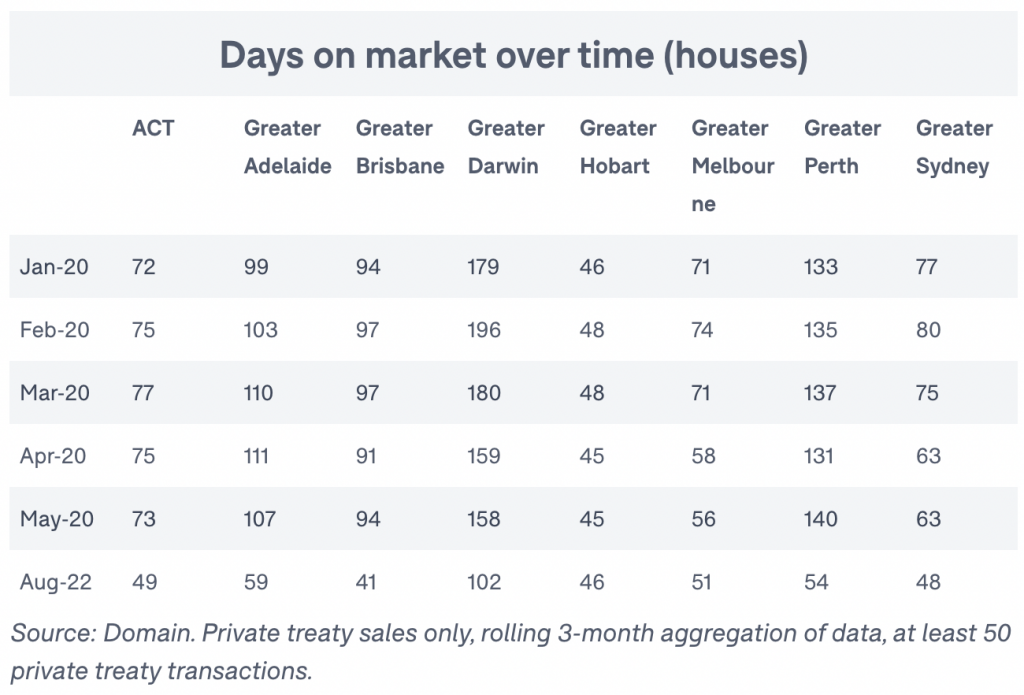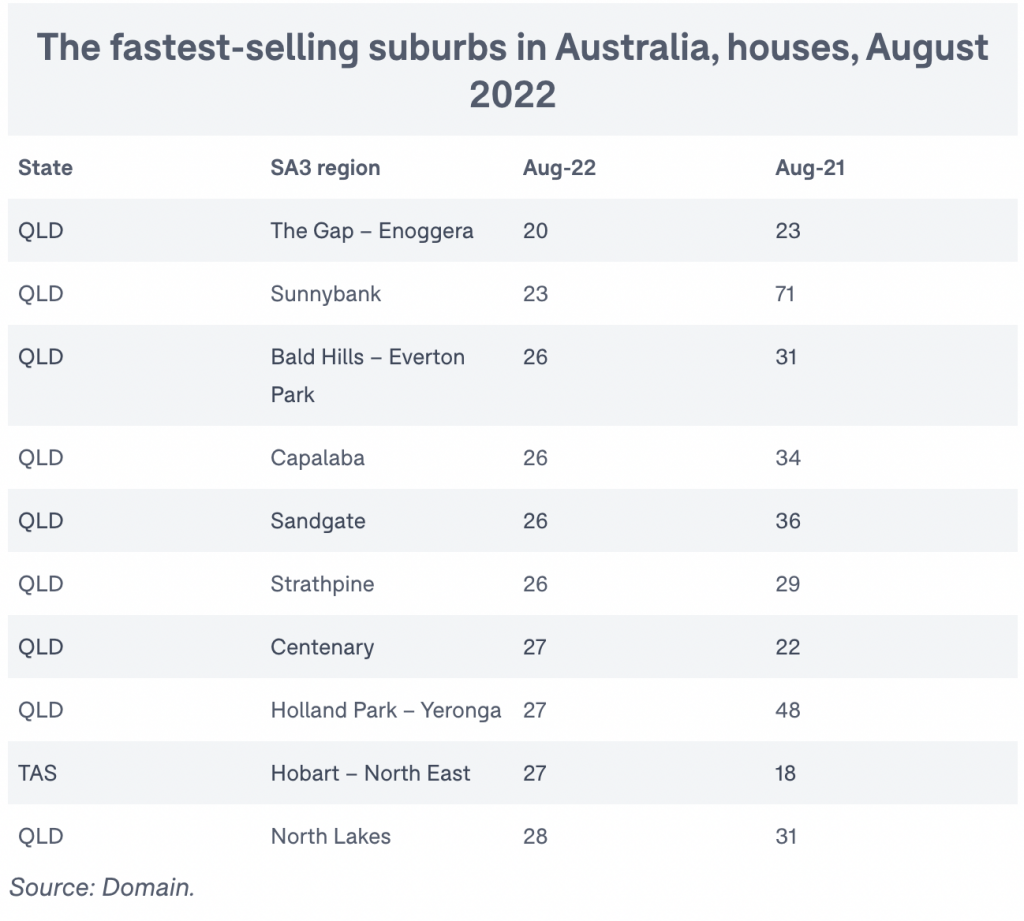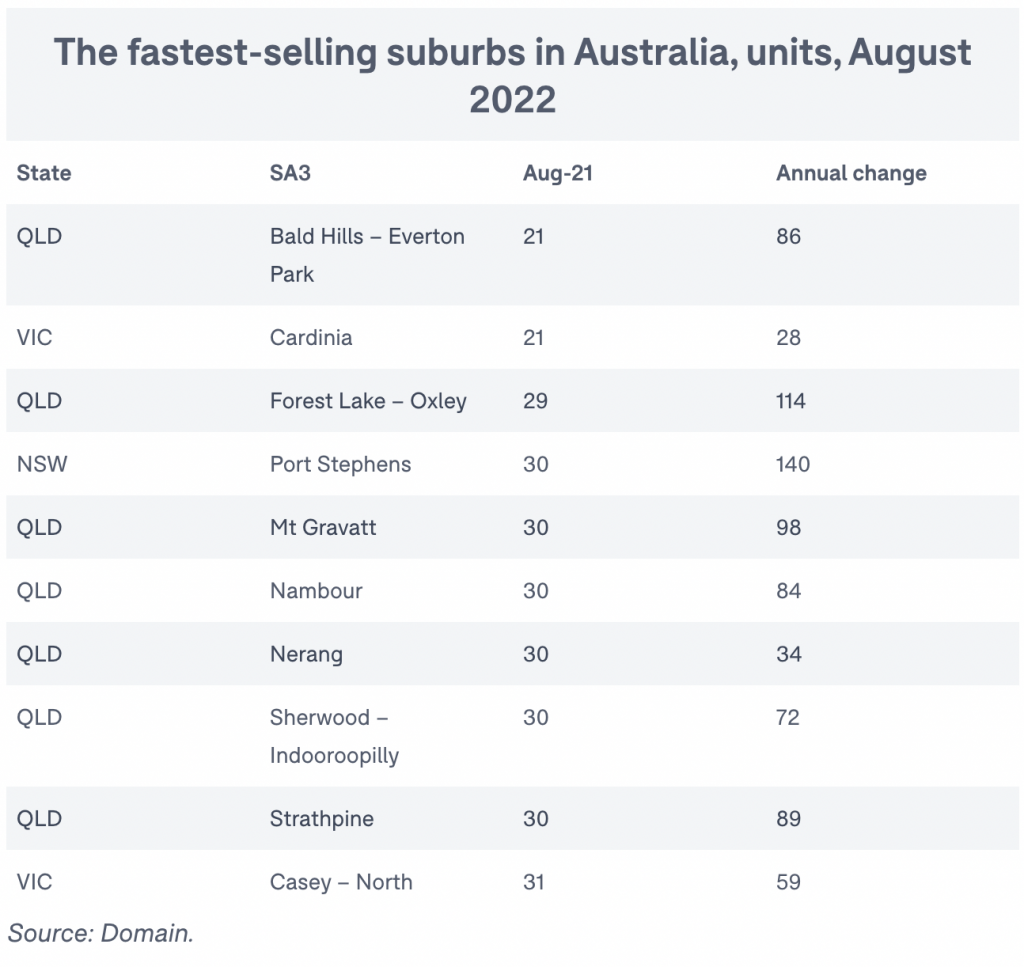Houses are taking longer to sell in every capital city in Australia, except for Adelaide, with the average number of days on market for properties offered for sale by private treaty stretching up to 29 days more.
But while that’s generally indicative of the market’s steady slowdown, that sales period is still far shorter than the time it took to sell a property before the pandemic.

In Sydney, the time taken to sell a house has risen to 48 days from a low point of 31 days in December; in Melbourne, it’s now 58 days compared to December’s 38 days; and in Brisbane, it’s 41 days as against its low point of 31 days in June this year.
In the other capital cities, Canberra is now taking 49 days, up from its lowest number of 22 in November; in Perth it’s 54 up from June’s low of 47; in Darwin, the city has the highest number of days on market at 102 compared to June’s 100; and in Hobart, it’s now 46 days, up by the most from 17 in November and December.
Only Adelaide has bucked the trend, with its days on market falling to 59 from July’s 62, June’s 63 and March’s 70.
The majority of Australia’s fastest-selling suburbs were in Queensland over August, the figures also show, revealing areas like The Gap and Enoggera, Sunnybank and Bald Hills and Everton Park are selling like hotcakes.
The only area outside of Queensland to make the top 10 fastest-selling suburbs was the north-east region of Hobart, where houses are selling in 27 days. That’s up from 18 days compared to the same time last year.

Even though the number of days on market has climbed in most capital cities, it’s still way below the median number we saw before the pandemic in all cities bar Hobart.
In January 2020, for instance, houses in Sydney were taking 77 days to sell as opposed to 48 in August 2022, in Melbourne 71 against 51 now, and in Brisbane a mammoth 94, more than double today’s 41.
Canberra was taking 72 days as against 49; Perth was an astonishing 133 against 54; Darwin was 179 against 102; Adelaide was 99 against 59; and only Hobart was steady, at 46 days back pre-COVID, the same as now.

Back before the pandemic, housing values were recovering after bottoming out in June 2019 but were still below 2017 peaks, and the interest rate had been cut to a historically low 0.75 per cent (as against 2.35 per cent now) to kick-start the struggling economy.
Source Domain

